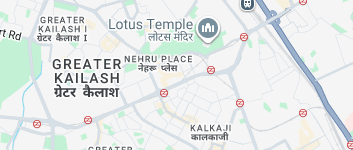Inverted duty structure is the condition in which tax rate of the input is more than tax rate of the output. In simple words GST due on the sales fall short of the GST Paid on input purchase. Input tax credit get accumulated in electronic credit ledger of the registered person. There are many challenges and issue faced in the economy due to Inverted duty structure like accumulation of tax refund, inefficiencies in cost, import incentives and impact on the particular sector.
Refund is claimed for higher tax which is paid on the input in comparison to tax on the output. Get help from Profesional Utilities to solve any problem related to the GST.
Table Of Content
What is inverted-duty-structure?
Inverted duty structure is defined as the state in which tax rate on the final product is less than tax rate on the input like intermediate good, raw material. These circumstances helps to claim refund of the taxes paid. Refund helps in the reducing the imbalance of the inverted duty structure.
Inverted duty structure refund example
Finished good such as Jute bags are sold at the 5%. Of GST. Raw material i.e Non-woven fabric used to make jute bag is precaured at 12% of the GST.
Inverted duty structure refund documents
Application for the GST Refund in inverted duty structure is required to be filed along with the documents or other evidence to initiate tax amount and interest. These evidence are used to show that money is taken or paid by the applicant has not been passed on to another person.
- Statement of invoices (Annexures-B)
- Self-declaration under rule 89(2)(I), if the amount claimed, does not exceed two lakh rupees, certification under rule 89(2)(m) otherwise.
- Self-certified copies of invoices from the relevant period that are included in Annexures-B but whose information is missing from GSTR-2A or 2B
- Undertaking in relation to U/s 16(2) (c) & Section 42 under GST
- Statement 1A under rule 89(2)(h)
- Statement 1 under rule 89(5)
- Declaration under 2nd & 3rd Proviso to section 54(3)
- Declaration U/s 54(3)(ii) (not used for Nil or exempt supply)
- Invoices Self-certified copies entered in Annexures-B whose details are not found in GSTR-2A or 2B of the relevant period
Refund of inverted duty structure for services
There are following steps that need to be followed to get the inverted duty structure refund as mentioned below -
- GST Form RFD-01 is filled along with the supporting detail and documents
- Detail filled in the GST Refund application are auto-filled in GST Form RFD - 02. Through SMS and email application is forwarded for future reference.
- With GST Department required documents are submitted.
- RFD-03 is filled by the applicant if in application of the GST Refund there is omissions, mistake or shortage. So changes can be made according to the application.
- In form RFD-04 90% of the refund claim has to be filled. After provisional refund order is issued by the proper officer.
- Documents are reviewed after receiving final instruction from the authorised officer to ensure law are complied.
- Form RFD - 06 is filled after refund is received by the taxpayer.
- Form RFD -7 is filled in case of denial of the refund application.
Adjusted Total Turnover in inverted duty structure
Adjusted total turnover in inverted duty structure is defined as after certain adjustment what the total turnover of the business would be. These adjustment include certain extraordinary items or non-operating items which are not part of the core activities of the businesses.
For Example -
These adjustments do not include turnover or revenue generated from the sale of the fixed assets, non-recurring income, losses or one-time gains or exceptional items which are not part of the regular revenue stream of the company
Adjusted Total turnover refer to total value of all as mentioned below -
- Under section 2 of clause (112) turnover in union territory or state does not include the service turnover.
- In clause D the ratio between the supply of services that are zero-rated under clause (D) above and those that are not zero-rated, this does not includes as mentioned below -
Value of the exempted supplies which doenot include zero rates supplies
(i) the value of exempt supplies other than zero-rated supplies; and
(ii) Under sub-rule (4A) or 4(B) or both during the relevant period refund is claimed in case of the turnover of the supplies.
Conclusion
Inverted duty structure appear when tax rate on the output services is less than input credit. Under certain condition registered person can be requested for refund. Due to the inverted duty structure, the economy has to face number of difficulties and problems, including tax refund buildup, cost inefficiencies, import incentives, and effects on certain industries. Various measure are taken by the government for inverted duty structure issue like duty rationalization or refund mechanism or concessions and exemption etc.
Why Professional Utilities?
At Professional Utilities, we leverage our industry knowledge and expertise to help businesses navigate complex regulations, minimize risks, and optimize operations for maximum efficiency and profitability.

One Stop Corporate Solution

PAN India
Services

Free Expert
Assistance

Google Verified
Business

Dedicated Support
Staff

Money-Back
Guarantee
Frequently Asked Questions
How do I use my accrued ITC from the Inverted duty structure to get a refund online?
The steps that need to be followed to claim accrued ITC as mentioned below -
- Step - 1 Visit GST Portal
- Step -2 Click services the select refund and application for refund.
- Step-3 Choose the type of reimbursement and whether or not to submit a NIL refund application.
- Step-4 'Refund on account of ITC accumulated due to inverted tax structure' should be selected as the refund type.
How can I submit a reverse charge ITC claim?
When receiving goods or services, only those that are being utilised or will be used for business purposes are eligible for ITCs on the GST amount paid under RCM. The recipient should only be paid in cash and cannot utilise the ITC to pay output GST on goods or services under reverse charge.
What is GST Refund rules?
GST Refund rules are that within two years of the relevant date, a person may submit a refund request in the required form (GFST RFD-01) and method for taxes, interest, or any other amount paid.
Who can not claim GST Refund?
A non-resident taxable person or a casual taxpayer cannot receive a refund unless they have submitted all of their returns for the whole time that their certificate of registration was valid.

.svg)







